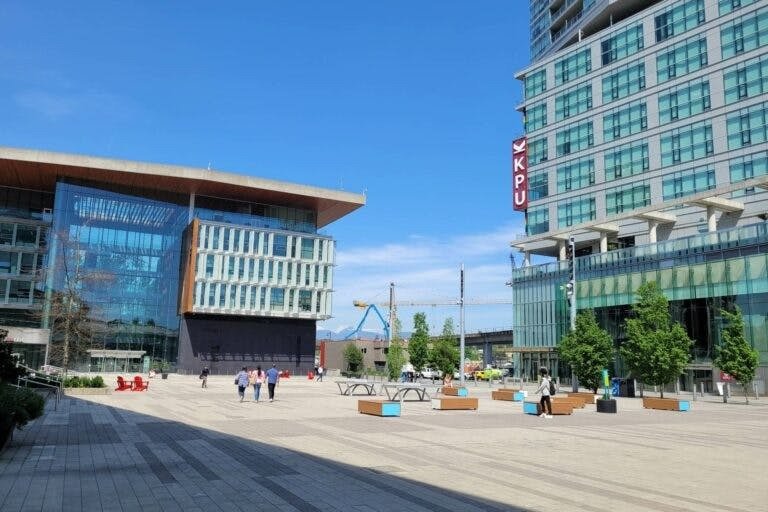Stories
We share stories and evidence on the link between urban design and human wellbeing.
Introducing: A free tool to study public life
Happy Cities’ award-winning Public Life Study can help you measure the impact of public space transformations on community connections, trust, and inclusion.
The secret to vibrant streets? Focus on what people can see
Transit-oriented development suggests that homes, shops, and services should all be located within 400 metres of transit. The actual distance to create vibrant streets may be much shorter.
How resident relocation policies can support wellbeing
Many rental buildings are aging and in need of upgrades. Happy Cities worked with Brightside Community Homes Foundation to understand how to better support resident wellbeing when redevelopment happens.
Zoning won’t create walkable suburbs on its own. But one great block might.
Surrey, B.C. shows a promising strategy to transform suburbs into more walkable, vibrant communities.
To build resilient communities, start with social connection
Social ties are the building blocks for community resilience. As extreme weather events increase, our connections can be the difference between life and death.
Don’t fear density: BC’s housing targets can be a wellbeing win
More housing is coming for 10 B.C. municipalities. Here are three ways that density can boost community health and wellbeing.
How to design a dementia-inclusive community
New planning and design guidelines to boost wellbeing for people living with dementia, from Happy Cities and SFU.
Where words fail: Teach architects and urban designers like violinists
Architects and urban designers justify or explain their work with words, and municipalities govern design with jargon-filled regulations. The outcome is often underwhelming.
The responsibility of the building to the street
Structural engineers are responsible for ensuring that buildings do not fall over. Mechanical engineers must ensure that people inside can breathe. But what responsibility do building designers have to the street outside?
Walkability, like apple farming, is all about getting the basics right
How cities can implement good ideas faster.
Community engagement is failing us. Here's how to fix it
Four ways to include more diverse community members in planning processes.
Walkable Spanish streets show what’s possible for North America
Inspiration from the streets of Segovia and Logroño
Seven lessons for implementing social activities in rental housing
Social activities for neighbours can help build a sense of community, boosting health, happiness, and resilience in multi-unit buildings.
Happy, healthy tenants benefit landlords, too
Three ways rental housing providers can support social connectedness within their buildings.
“Living Together” workshop recap: Key elements for social connection in multi-unit housing
As Vancouver becomes denser, housing professionals and advocates can work together to identify creative solutions to the crises of loneliness and social isolation.
Learning from community housing movements: Unlocking the social potential of parking spaces
Parking is a resource-intensive use of space. What if these resources could be freed up to boost social connection instead?
Learning from community housing movements: Transforming corridors into social spaces
Hallways, entrances, and exits are primarily designed with fire safety in mind, which can lead to long, monotonous corridors.
Learning from community housing movements: The social potential of multi-unit building lobbies
Five design strategies for transforming a lobby into an awesome social space.


















